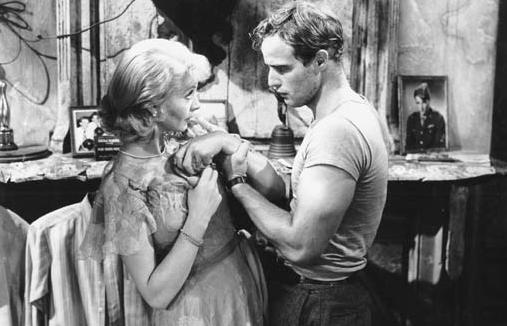Last week I visited New Orleans for my first time ever. Others can speak more deeply about the city than I, who only saw it through tourist’s eyes and only for a week. For me, it was a study in contrasts: the best live music I have ever heard performed in seedy bars, old world charm a block away from Bourbon Street decadence, the elegance of the Garden District mansions clashing with the boarded-up Hurricane Katrina-ravaged houses of the Ninth Ward.
There is a similar study of contrasts in the most famous literary work connected with the city. Our friends Lois Stover and David Finkelman sprung the following surprise on us: we were walking along Elysian Fields Avenue when they stopped us at a non-descript white clapboard row house. To see the house number—632—they had to push away a piece of siding insulation that had slid over it. Then they mimicked fake southern accents and read us the following dialogue:
What’s the matter, honey ? Are you lost?
They told me to take a street-car named Desire, and then transfer to one called Cemeteries and ride six blocks and get off at—Elysian Fields!
That’s where you are now.
At Elysian Fields ?
This here is Elysian Fields.
They mustn’t have—understood—what number I wanted…
What number you lookin’ for?
Six thirty-two.
You don’t have to look no further.
Of course, this is Blanche DuBois and the Kowalskis’ neighbor Eunice upon Blanche first arriving in New Orleans to look up her sister Stella.
The play proceeded to influence my observations for the rest of our stay. Was New Orleans, I wondered, a once elegant lady hanging on for dear life? Was Hurricane Katrina akin to Stanley’s rape, all but pushing her over the edge. Was the raw animal desire that drives both Blanche and Stanley still pulsating at the heart of the city?
We saw some of that energy when, in honor of Stanley and Stella (no, not really), we went to a bowling alley. The place was called “Rock and Bowl” and was another study in contrasts: we listened to nationally known Lil’ Nathan and the Zydeco Big Timers while others, seemingly oblivious, bowled.
New Orleans, I concluded, is a mythical city. Fortunately it was kind to these strangers from Maryland.
Go here to subscribe to the weekly newsletter summarizing the week’s posts. Your e-mail address will be kept confidential.


